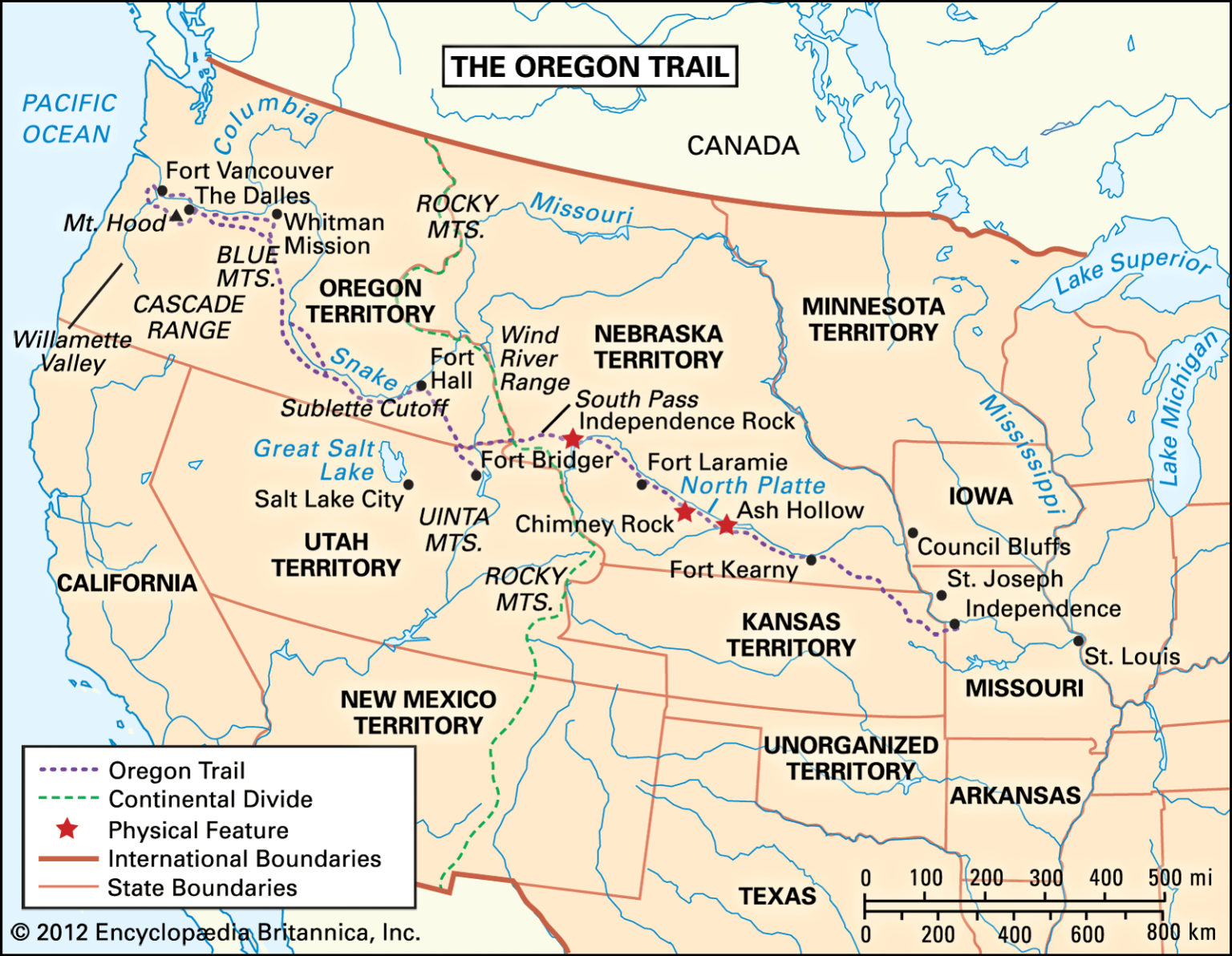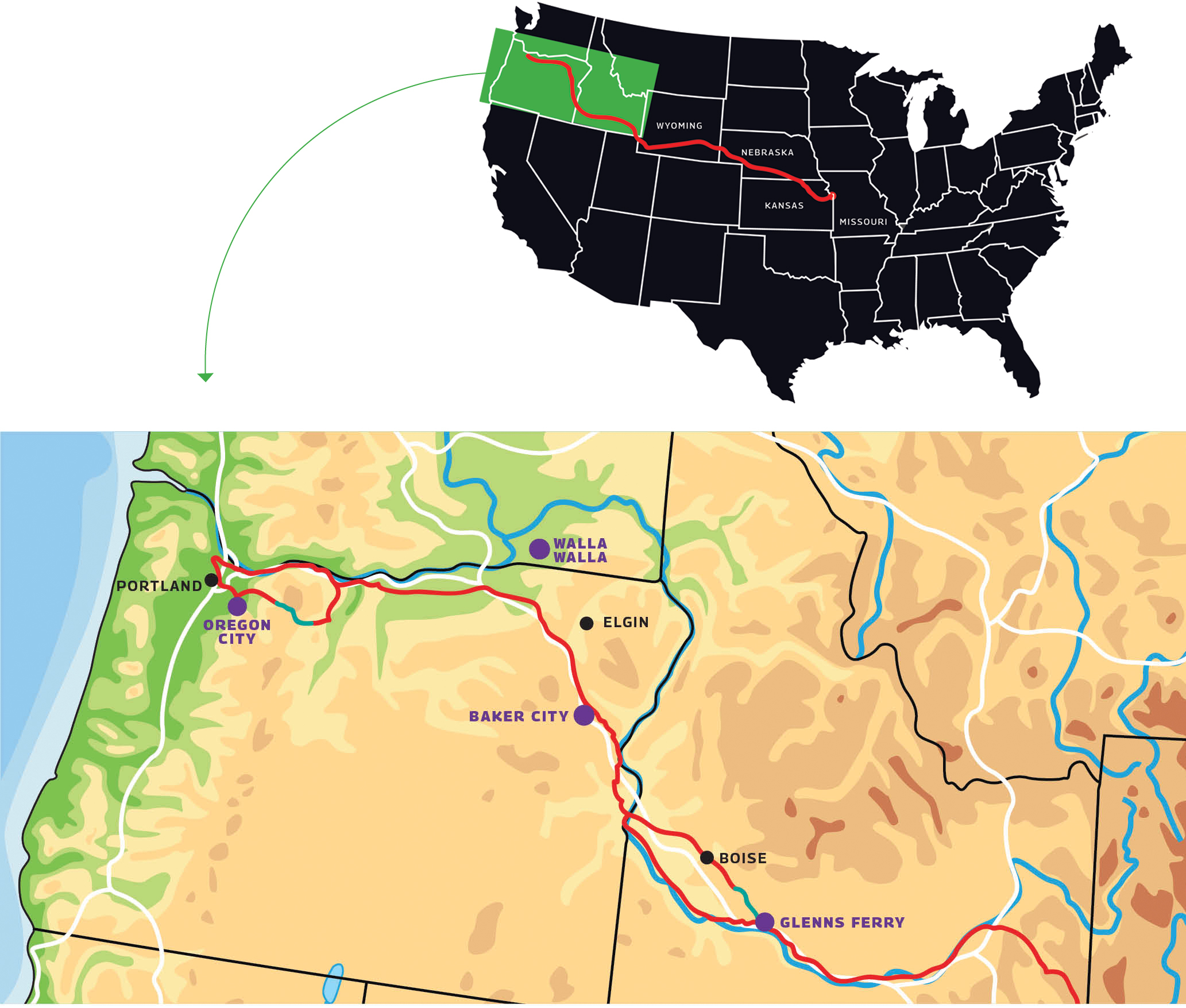
The Endless Horizon: Why the Oregon Trail Forged America’s Legends of Destiny and Desire
The image is etched into the American consciousness: a canvas-covered wagon, creaking under the weight of dreams and necessities, slowly navigating a vast, untamed landscape. Ahead, an endless horizon beckons; behind, the familiar world recedes into memory. This is the enduring, iconic legend of the Oregon Trail, a saga of human ambition, resilience, and profound transformation that captivated a young nation. But beyond the romanticized sepia tones and the popular video games, lies a more complex, multifaceted question: Why? What potent cocktail of desperation, hope, and ideology propelled nearly half a million souls across 2,000 perilous miles of wilderness to a distant, unknown territory? The answer lies at the heart of America’s foundational legends: the promise of unparalleled opportunity, the relentless pursuit of freedom, and the conviction of a nation’s manifest destiny.
The story of the Oregon Trail is, at its core, a narrative of land – specifically, the allure of free, fertile land. By the 1830s and 1840s, the eastern states, particularly the burgeoning Midwest, were experiencing increasing population density, rising land prices, and diminishing opportunities for those without inherited wealth. The Panic of 1837 had plunged the nation into a severe economic depression, leaving countless farmers, merchants, and laborers bankrupt and disillusioned. For these individuals, the tales filtering back from the Pacific Northwest – carried by intrepid fur traders and early missionaries – spoke of a veritable Eden.
"Oregon Fever," as it came to be known, was a contagion of hope. Reports described a land of immense fertility, where crops grew with unprecedented vigor, timber was abundant, and rivers teemed with fish. This promise wasn’t just about subsistence; it was about prosperity, about the chance to own a vast tract of land, to build a legacy for future generations. The U.S. government, eager to solidify its claim to the Oregon Territory against British interests, further fueled this ambition with legislative incentives. The Donation Land Claim Act of 1850 offered 320 acres of free land to any single white male settler (or "American half-breed") over 18, and 640 acres to married couples, provided they lived on and cultivated the land for four years. This was an astonishing proposition – a veritable king’s ransom in land for simply making the journey and staying. For many, burdened by debt and seeing no future in their current circumstances, the decision to "go west" was not just an adventure, but a desperate, rational economic gamble.

Beyond the purely economic, the Oregon Trail represented a profound yearning for a fresh start, a chance to escape the burdens of the past. It was a physical manifestation of the American Dream, a belief that with hard work and determination, anyone could achieve success and happiness. For those who had failed in business, for farmers whose land was worn out, or for individuals seeking to leave behind social constraints or personal misfortunes, the westward journey offered a blank slate. The vastness of the continent seemed to promise an endless supply of second chances, a place where one could reinvent oneself, free from the judgments and limitations of established society.
This desire for autonomy and self-determination resonated deeply with the spirit of rugged individualism that defined much of early American identity. The journey itself was a test of this ideal. To traverse the Oregon Trail required immense courage, resourcefulness, and self-reliance. Families had to learn to repair wagons, hunt game, ford rivers, and navigate by stars, often with minimal external support. Those who made it to Oregon had proven themselves against nature’s harshest challenges, reinforcing a belief in their own capabilities and the inherent strength of the pioneering spirit. As one anonymous emigrant famously wrote, "The cowards never started, and the weak died along the way." While stark, this sentiment captures the brutal self-selection process that forged the legendary fortitude of the Oregon pioneers.
Religious zeal also played a pivotal role in charting the initial course for the Oregon Trail. Long before the great waves of homesteaders, Protestant missionaries, notably Marcus and Narcissa Whitman, and Henry and Eliza Spalding, ventured into the Oregon Territory in the 1830s. Their primary goal was to convert Native American tribes, bringing Christianity and "civilization" to the indigenous peoples of the Pacific Northwest. While their efforts met with mixed results and, tragically, often led to conflict and misunderstanding, their letters and reports back East were instrumental in publicizing the region’s climate, resources, and accessibility. These accounts, often published in religious newspapers, not only inspired others with a missionary calling but also painted a picture of a fertile, promising land that could support a thriving white settlement. For many devout Americans, westward expansion was not just an economic or political endeavor, but a divinely ordained mission, an extension of God’s will across the continent.
This brings us to perhaps the most powerful ideological force driving the Oregon Trail: Manifest Destiny. Coined by journalist John L. O’Sullivan in 1845, this phrase encapsulated the prevailing belief that the United States was divinely ordained to expand its dominion and spread democracy and capitalism across the North American continent. O’Sullivan wrote that it was "our manifest destiny to overspread the continent allotted by Providence for the free development of our yearly multiplying millions." This wasn’t merely a political agenda; it was a moral imperative, a spiritual calling that imbued the westward movement with a sense of national purpose and grandeur.
The Oregon Trail became the physical embodiment of Manifest Destiny. Each wagon train, each family pushing westward, was seen as contributing to the fulfillment of this grand national project. The acquisition of the Oregon Territory was not just about land; it was about securing America’s continental boundaries, preventing foreign encroachment, and establishing the United States as a dominant power. For many, participating in the Oregon migration was an act of patriotism, a tangible contribution to the growth and glory of their nation. It fused personal ambition with national destiny, elevating individual hardship to the level of collective heroism.
However, it is crucial to acknowledge that the legend of the Oregon Trail, while celebrating American resilience and ingenuity, is also fraught with complex and often tragic undertones. The "empty" lands described by promoters were, in fact, the ancestral homes of numerous Native American tribes. The relentless westward expansion led to the displacement, disease, and often violent subjugation of these indigenous populations. The pioneers, in their pursuit of new beginnings, unwittingly (or sometimes knowingly) became agents of cultural destruction, a darker chapter often omitted from the romanticized versions of the legend. The journey itself, while romanticized, was brutally unforgiving. An estimated 20,000 to 40,000 emigrants, or roughly one in ten, perished along the trail from disease (cholera, dysentery), accidents (drowning, accidental shootings), starvation, or exposure. Graves dotted the landscape, silent testaments to the immense human cost of this grand migration.
Yet, despite these grim realities, the Oregon Trail has endured as a cornerstone of American legend. It represents a pivotal moment when a young nation collectively stretched its boundaries, both geographically and psychologically. It forged a new archetype of the American character: the resilient pioneer, forever pushing against the frontier, seeking opportunity and freedom on the next horizon. The motivations that drove these early Americans – the hunger for land, the desire for a fresh start, the conviction of a divine mission, and the overarching ideology of Manifest Destiny – are not just historical footnotes. They are the very threads woven into the fabric of America’s identity, shaping its self-perception as a land of endless possibility and boundless ambition.
Today, the ruts of wagon wheels can still be found in various stretches across the plains, silent scars on the landscape, physical reminders of an epic journey. They invite us to look beyond the myth to understand the complex mix of hope, desperation, and ideology that propelled hundreds of thousands to risk everything. The Oregon Trail is more than just a historical route; it is a powerful narrative about who Americans believed themselves to be, and what they were willing to endure to achieve their vision of a promised land. It is a legend that continues to echo in the national psyche, a testament to the enduring human quest for a better life, even if it lies at the end of an endless, perilous horizon.



